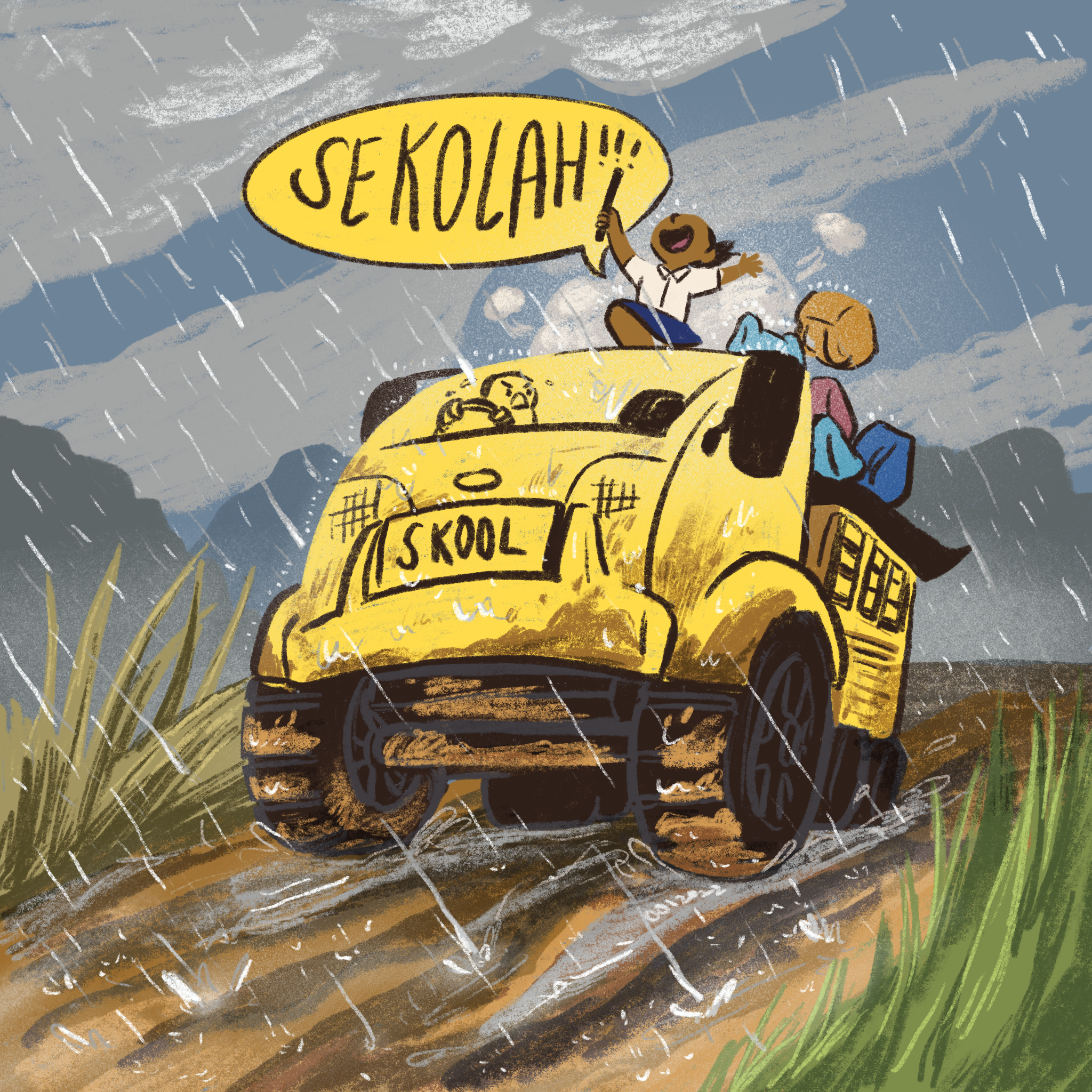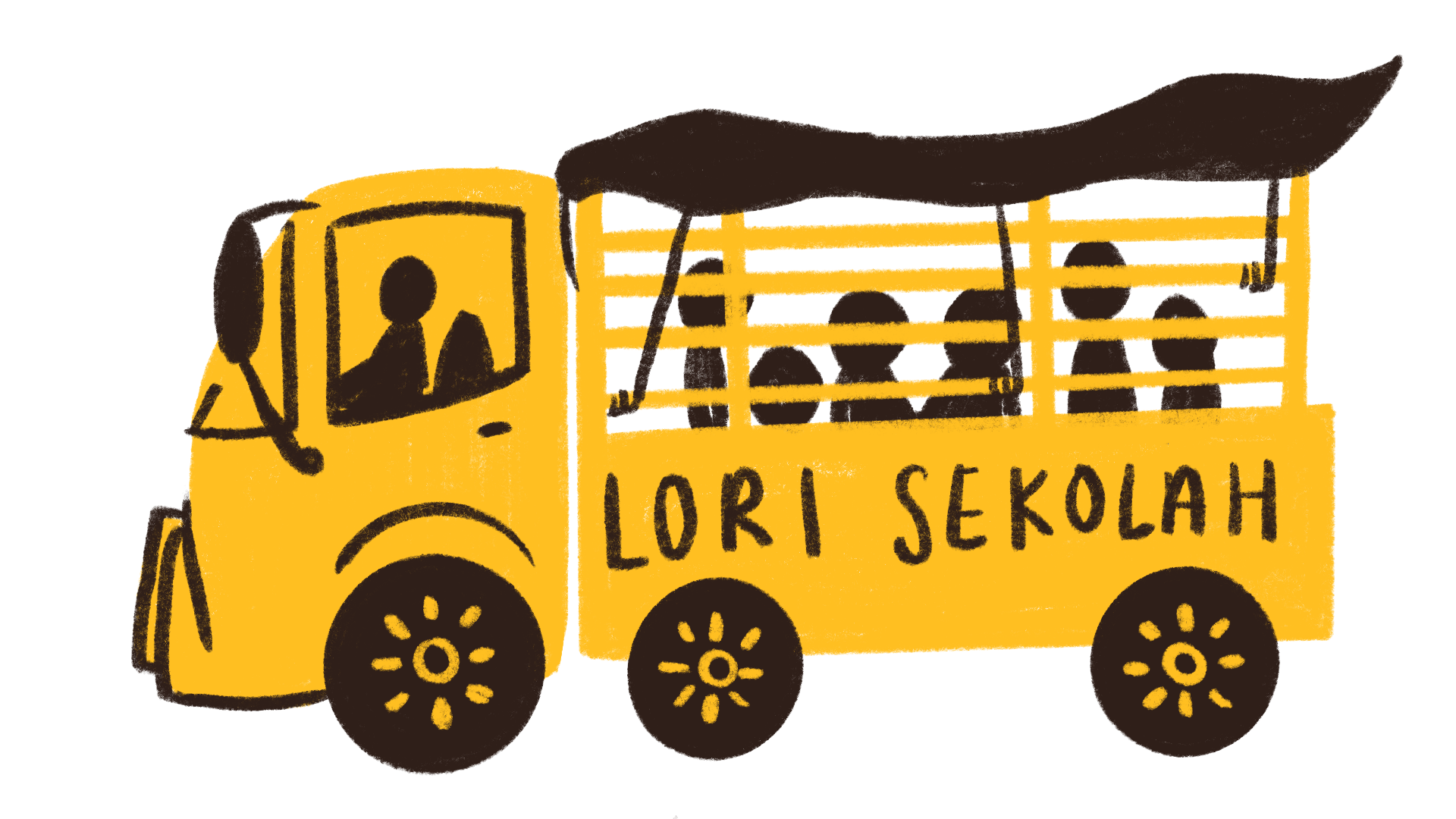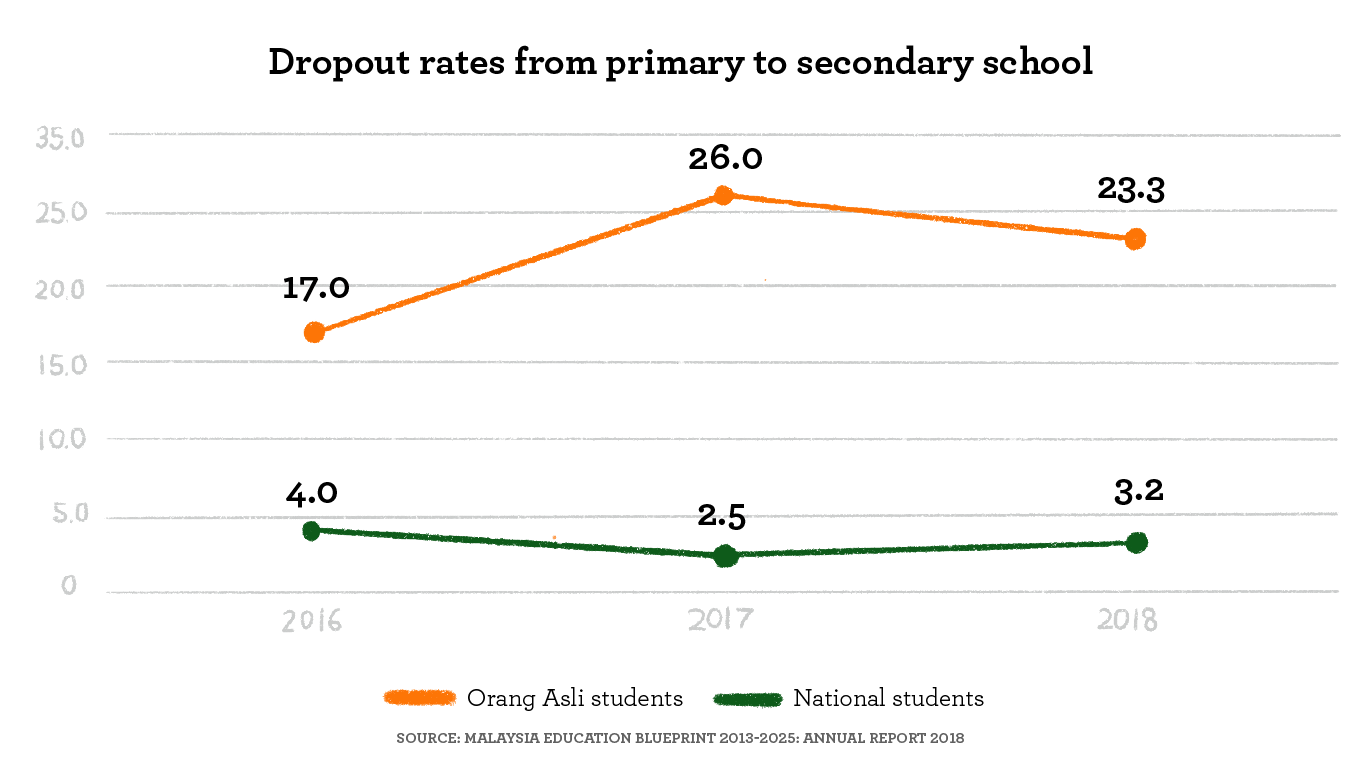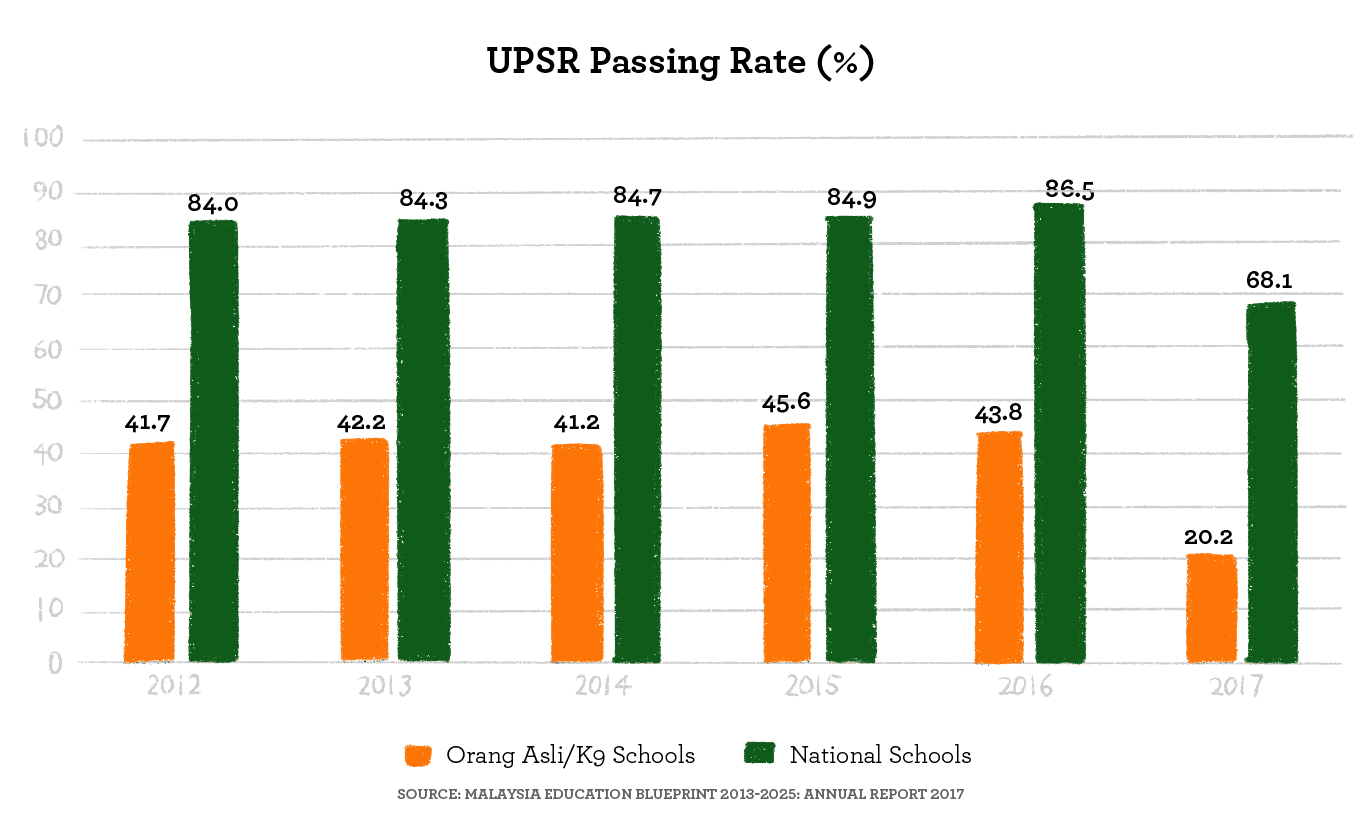You’ll need to finish the lesson first! When you’ve read through each chapter, and found the 12 ways we can improve Orang Asli access to education, you’ll unlock this reward which you can share with your friends!
You've found 1 solution(s)! 11 more to go! Keep track of your progress with this scorecard here.
Find all the solutions to unlock your reward
Read the 12 recommended solutions in this research paper.
YOUR SCORECARD:












Recommendation 1: There must be a greater focus on learning and addressing underlying challenges instead of symptomatic issues.
The general school culture must prioritise learning instead of examinations or rote memorisation. High-quality education that can motivate and nurture students is needed to produce Orang Asli students who are independent learners. Policies and programmes need to address underlying issues instead of only dealing with symptomatic problems at a surface level which do not resolve or eradicate these issues.
Recommendation 2: Indigenous cultures and history must be integrated into the mainstream curriculum.
It is very important that indigenous cultures and history be included in the mainstream curriculum, and that Orang Asli should not be represented as an exotic “other”, but celebrated as part of the diversity of peoples in Malaysia. Schoolchildren should be taught about different Orang Asli sub-ethnic groups, where they live, their contribution to nation-making, their arts, and their cultures that are closely linked to the natural environment.
The Orang Asli's rights to self-determination as indigenous peoples should also be included in mainstream education.
Recommendation 3: Existing programmes must be monitored and evaluated to ensure their efficient and effective delivery and implementation.
Regular monitoring, and mid- and post-programme evaluations are needed to ensure that programmes remain on track and are adjusted for new issues that may arise. This monitoring and evaluation needs to be considered at the beginning of the original programme design.
Recommendation 4: Teachers and school leaders who are equipped and capable of delivering quality education for Orang Asli students need to be entrusted with greater autonomy and balanced accountability.
Teachers and school leaders who are able to enhance the quality of education for Orang Asli students should be given the freedom to do so, as they could be role models that drive change. However, this autonomy needs to be balanced with accountability. These teachers and school leaders also need to be further trained and equipped to fully leverage this autonomy to deliver effective teaching and learning along with the efficient allocation of resources.
Recommendation 5: Pre-posting training on Orang Asli cultures could be provided to teachers, and infrastructure and resources for teachers in Orang Asli schools should be improved.
Teachers who are posted to schools with Orang Asli students should be provided with training to introduce them to the history and culture of the particular Orang Asli sub-ethnic group they will be teaching. This preparation module could also include implicit bias training to create self- awareness of learned racial biases against Orang Asli.
Teachers who are posted in Orang Asli schools often take up many different responsibilities outside the classroom, such as taking care of students after school and maintaining the school’s infrastructure. These teachers should be given more support and increased allowances for these added responsibilities. Their living conditions and teaching infrastructure could also be improved.
Recommendation 6: Teachers should be trained in innovative and adaptive pedagogies, and platforms for knowledge sharing could be established.
Teachers should be introduced to different teaching tools such as culturally responsive and adaptive pedagogies, both before and during their postings, with experienced teachers encouraged to share their best practices and offer advice to new teachers.
Other knowledge sharing initiatives could include annual teaching conferences, to foster networking and support among teachers; and user-friendly online knowledge sharing platforms as a resource for teachers.
Teachers often use their private funds to create innovative teaching tools. They should be supported, and a teaching and learning fund be made available to teachers. Recognition should also be given to teachers and schools for their best practices.
Recommendation 7: Trust and collaboration between schools and Orang Asli communities needs to be built as Orang Asli parents and their communities are important partners in education.
This is critical in creating a supportive environment for Orang Asli children. Schools and communities should have open communication and work collaboratively. Schools can also draw upon the community’s expertise and local knowledge as part of the learning experience for their students.
Recommendation 8: Community-based schools (PDK) need to be recognised as part of the support system for schools and adequate essential resources should be provided to PDKs.
Support and recognition should be given to PDKs for their important role in community education. PDKs provide preschool education, after-school programmes and in some cases alternative schooling for children without access to public schools or those who have dropped out. Some PDKs also provide learning opportunities for adults in the community.
Support can be in the form of funding and resource assistance to PDKs, including infrastructure such as libraries, computers and reliable internet connection. However, their autonomy should remain an important feature of their governance structure.
Recommendation 9: Good quality preschool education needs to be provided based on learning through play, social interaction, and their environment.
Orang Asli students without access to preschools are at a disadvantage when they enter Standard 1, as the curriculum assumes that students can already read, write, and count. Teachers have to pay special attention to teach them these basic skills, but this may not be possible given large class sizes. Students who attend preschool may also be more confident in their abilities and are able to transition to schooling life better. There are many villages without access to preschools and the founding of more community-based learning centres (PDK) could play an important role in providing preschool education for Orang Asli children.
Recommendation 10: Orang Asli communities should be empowered to be their own agents of change and participate in the process of Orang Asli-related policies.
This ensures that their cultures and views are incorporated in policymaking. Education issues and challenges should be addressed with Orang Asli parents and communities at the school, state, and national levels.
The creation of an Orang Asli education council comprising Orang Asli leaders, education policymakers, principals, teachers, and other relevant stakeholders to govern and monitor the progress of policy and programmes for children would help to ensure voices of the Orang Asli are fully taken into account and are involved in the close monitoring of any programmes.
Recommendation 11: Create a strength-based discourse to shift away from the current deficit discourse on Orang Asli.
Orang Asli students’ high dropout rate and gap in educational achievement are often attributed to their culture and way of life. All stakeholders need to move away from this 'deficit discourse', and instead adopt a strength-based framing that values Orang Asli culture as an asset. This includes shifting to culturally responsive teaching methods that draw on the students' cultural context to make learning relevant and effective.
Recommendation 12: The collaboration of relevant ministries must be strengthened to address the multidimensional challenges that Orang Asli children and communities face.
Multiple agencies need to coordinate in order to provide access to high-quality education. This includes building schools that are close to the villages, providing safe and reliable transportation and roads, and financial and resource assistance to families and schools.
Infrastructure such as hostels, libraries, computer centres, and internet connectivity are also desperately needed.
At the village level, basic amenities like electricity and clean water are vital.
The cooperation of NGOs and other charitable foundations are also needed in this effort. Information flow and transparency on the availability of assistance also need to be addressed so that parents and students are aware of and have access to the assistance and resources available to them.

Somewhere in the middle of the forest in Pahang, a skyscraper will rise from an Orang Asli settlement. That is, if Niza has her way.
“I want to build a school that’s right in my village,” Niza tells us. “A school that’s more than what we can build, that’s many storeys high.”
“Because Orang Asli students have never experienced being in tall buildings, so I want them to try it, just like Malays and Chinese and other races.”
As she speaks to us via video call, the low hum of a generator can be heard in the background, powering the community Wi-Fi hotspot that is connecting us to her, in her village in Pos Lenjang, somewhere at the foothills of the Titiwangsa mountain range. The connection is weak, and we have to turn off our video feed to keep the call going.
Spotty internet connection has made learning more stressful during the Covid-19 pandemic, admits Niza. She prefers asking questions to the teacher in person, rather than over messaging apps.
We are speaking to Niza as part of a series of interviews* with Orang Asli children, where we invite them to imagine the school of their dreams. Invariably, these imagined schools are rooted in current challenges.
“If I build it in our village, then we wouldn’t need to use the JAKOA lorry (to get to school), we can just walk there,” she explains, referring to the transport provided by the Orang Asli Development Department.
These lorries are made to carry goods, but are apparently a decent way to transport students along mud tracks too.

“It’s big and spacious, but when there are many students it becomes cramped.” she says, laughing as she describes the journey. “Squeezed here, squeezed there. And when we try to sleep, we get knocked here, knocked there on our heads!”
It is an eight-hour journey, along mud tracks through the forest, and out to town, with some 30 other students packed into the lorry’s open-top carriage.
It’s never happened before, but Niza sometimes fears the lorry would tip over: “Because it’s crowded, and heavy, while the roads are not good,” she explains.
“The roads near our village are filled with holes, and when it rains, it’s finished! They become like a swamp!”
The driver would have to stop and pull a plastic cover over the carriage, which is a poor defence against heavy rain, but at least keeps some parts of the carriage dry.
“Everyone just starts tossing their bags into the dry area in the lorry,” she tells. “When we’re tossing bags, no one is angry, but when we arrive at school, some get angry because they can’t find their bags!”
At school, she stays at the hostel until her next lorry ride brings her home for the semester holidays.
Do you like taking the lorry to school? we ask. “Yes,” she replies. “There’s no other way to get to school, so I’ll just take whatever there is.”
As long as you get to school? “Yes. Because I like going to school, rather than sitting in the village not knowing what to do.”
The challenge of merely getting to school is one faced by many Orang Asli students. A 2021 research paper by the Institute for Democracy and Economic Affairs (IDEAS) revealed transport as one of the problems most often cited by Orang Asli students and parents when it comes to education attainment, with most of the concerns related to the reliability or adequacy of the transport provided by JAKOA.
Some have even reported accidents due to unsuitable or overloaded vehicles.
In spite of this, the majority of those surveyed continue to rely on JAKOA’s transport assistance, whether in the form of contracted transport or, in some cases, fuel subsidies. This underscores the broader socio-economic challenges faced by the Orang Asli, which limits their access to infrastructure that mainstream populations take for granted.
According to the most recent available statistics from the Economic Planning Unit in the Prime Minister’s Department, when the national poverty rate was 3.8% in 2009, the Orang Asli poverty rate was 49%.
IDEAS’ research identified poverty as one of many factors contributing to high dropout rates among Orang Asli students – especially during the transition between primary and secondary school – and poor academic performance.


“The availability of transport assistance shows there is an understanding of the needs of Orang Asli communities,” says Wan Ya Shin, the author of the IDEAS report. “But there is a need to continue improving the efficiency and effectiveness of these assistance programmes through better monitoring and evaluation – for all the programmes, not just for transport.”
IDEAS’ surveys revealed many instances where assistance programmes underwhelmed due to poor implementation. One example is the disbursement of student allowances, which is disbursed at the end of the month, meaning some students go hungry while waiting for the disbursement, and some even end up dropping out.
“The best way to improve is to empower the local communities themselves to be involved in the whole process,” continues Ya Shin. “The creation of an Orang Asli education council comprising Orang Asli leaders, education policymakers, principals, teachers, and other relevant stakeholders to govern and monitor the progress of policy and programmes for children would help to ensure voices of the Orang Asli are fully taken into account and are involved in the close monitoring of any programmes.”
“There should then be a proper channel through which this council can make complaints and suggestions to all the relevant ministries, to facilitate collaboration between ministries.”
Midway through our interview with Niza, she has to cut our conversation short.
“Wait, wait. The WiFi has run out of petrol,” she says, talking over a commotion of voices in the background. The petrol generator that powers the community WiFi hotspot is low on fuel. Her connection won’t last much longer.
“It’s not the pre-paid credit, it’s the petrol,” she clarifies, at once alluding to the two challenges that affect her ‘transport’ to school during the pandemic.
While modern connectivity is making the world smaller, bringing people closer by the day, Niza’s dream school still seems very, very far away.
 You have not found all the solutions in this chapter
You have not found all the solutions in this chapter